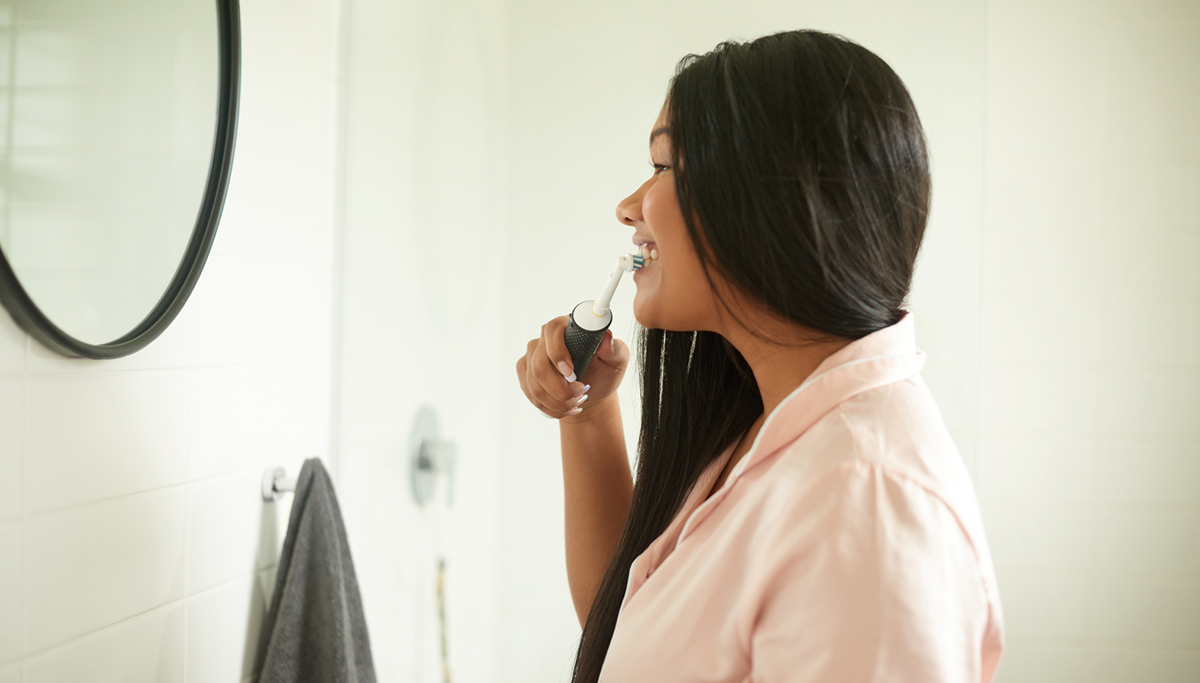Reasons to love electric toothbrushes and how to properly brush with them
These days, it seems like everything is going electric - cars, fireplaces, scooters, and even your toothbrush! And just like an electric scooter takes the labor out of scooting, electric toothbrushes help make our oral health routine a little easier. There are many reasons why we love electric toothbrushes. Let's dive into their benefits and how to master your electric brushing technique.
They're easy to use
We love electric toothbrushes because they remove most of the physical work that comes with brushing your teeth. By using bristle vibration and rotation technology, electric toothbrushes can essentially do all the work for you! And what's not to love about that? Having the option to set your toothbrush on "auto-drive" also helps provide greater access to oral health. For example, it can be helpful for people with mobility limiting issues like arthritis who may struggle with manual brushing movements.
They provide a deeper clean
A study conducted by Cochrane Oral Health Group revealed that they are more effective at cleaning compared to a manual toothbrush. After three months of brushing with an electric toothbrush, participants reduced plaque by 21 percent and gingivitis by 11 percent. In addition, many electric toothbrushes are equipped with built-in timers that can help people brush for the recommended 2-minute duration.
They can be fun for kids!
Brushing with an electric toothbrush can help kids learn a consistent oral health routine. They might have fun picking various brushing modes, waiting for the timer to reach zero, or in advanced models, even connecting with different apps for games. Regardless of the reason, electric toothbrushes can help make kids more enthusiastic about their daily brushing routine—which is a win all around!
How to brush with an electric toothbrush
One of the most important things to remember when using an electric toothbrush is that it's doing the work for you, so there's no need to push down or scrub back and forth. Whether it's your first time or you need a refresher, next time you brush with an electric toothbrush, we recommend following these five steps:
- Properly floss your teeth.
- Hold the brush at a 45-degree angle.
- Place the brush over each tooth for 3 to 5 seconds, starting in the front and slowly moving to the back.
- Gently run the brush over your gums. If your brush has a 'gentle' or 'gum' setting, please be sure to switch to it.
- Replace the brush head every three to four months.
If you notice tooth sensitivity, swelling, and bleeding, ask your dentist if you may be brushing too hard. These could also be underlying symptoms of gum disease.
Does this mean manual toothbrushes are bad?
Electric toothbrushes have many benefits, but does this mean you should throw away your manual toothbrush? Absolutely not! If you're able to achieve successful oral health with your manual toothbrush, then keep doing what you're doing! You win either way.
All brushes, including manual, can be effective at removing plaque if used correctly and for the appropriate length of time - about two minutes at each brushing. As ADA dentist Dr. Richard Price says, "it's not the brush. It's the brusher."

